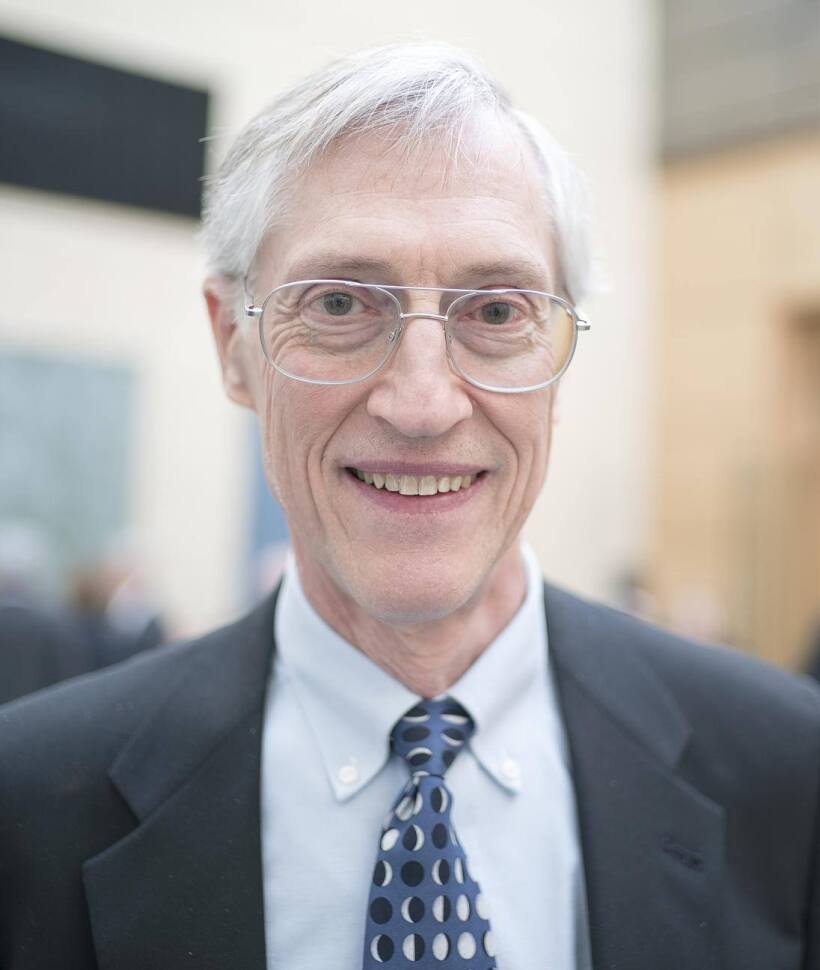Nobel and Noteworthy: Fun Facts About Former Physics Prize Winners
Every year, autumn brings crisp weather, fresh coffee shop menu items, and a new group of Nobel laureates. While their prize-winning work is often what they’re best known for, laureates are multifaceted individuals. Let’s dive into some other remarkable accomplishments from a few past winners of the Nobel Prize in Physics.
Andrea M. Ghez – Inspiring the next generation of women astronomers

Andrea Ghez. Official portrait taken in December 2022.
© Nobel Prize Outreach. Photo: Stefan Bladh.
Five women have won the Nobel Prize in Physics. In 2020, Andrea M. Ghez was the fourth woman to join that list, along with Reinhard Genzel, for their discovery that an invisible and extremely heavy object — a supermassive black hole — governs the orbits of stars at the center of our galaxy.
Ghez is also an author. She and aerospace engineer Judith Love Cohen published a children’s book, “You Can Be a Woman Astronomer,” in 1995, to encourage young girls to explore their natural interests that could lead them to careers in astronomy. Their book highlights that a love for puzzles and having a strong imagination are some of the qualities that make a great astronomer. Twenty-five years later, Ghez becoming a Nobel laureate was a true testament to her passion and dedication as a woman thriving in a male-dominated field — showing young girls that they, too, have a place at the telescope.
John C. Mather – Unveiling the universe with JWST

John C. Mather, March 24, 2015.
Photo: Christopher Michel
John C. Mather is probably best known for sharing the 2006 Nobel Prize in Physics with George F. Smoot for the discovery of the basic form of the cosmic microwave background radiation, as well as its small variations in different directions.
By the time he won the Nobel Prize in 2006, he was also playing a major role in creating the world’s most powerful space telescope. Mather began working on the James Webb Space Telescope in 1995 by submitting a proposal to NASA Headquarters for the Next Generation Space Telescope. Shortly after the proposal, he served as the senior project scientist for the JWST until 2023. Today, space aficionados everywhere continue to be in awe of the images the JWST captures. Thanks to Mather’s work, our world can view the universe from a completely new perspective.
Luis W. Alvarez – Dinosaur extinctions and keeping airspace safe

Portrait of Luis Alvarez at the celebration at Lawrence Berkeley National Laboratory (LBNL) in honor of his 1968 Nobel Prize in physics.
Photograph by Jerome Danburg, courtesy AIP Emilio Segrè Visual Archives, Danburg Collection
Alvarez was awarded the Nobel Prize in Physics in 1968 for his work on elementary particle physics. His work had an incredible range and included X-raying the Egyptian pyramids for hidden chambers, developing the Alvarez hypothesis and being an instrumental part in creating the Ground-Controlled Approach (GCA) system.
He and his son, Walter Alvarez, proposed the Alvarez hypothesis in 1980, which states that an asteroid impact caused the mass extinction of non-avian dinosaurs 66 million years ago. This theory was initially controversial, but it is now the most widely accepted explanation for the mass extinction of dinosaurs.
Alvarez was also an amateur pilot and his passion for flying led him to develop things like the GCA, which allowed pilots to land safely in poor visibility. While working on the GCA, he became the first civilian to fly a low approach with an obstructed view outside of the cockpit.
His work has changed the world as we know it in multiple ways, from how we look at the past to how we look to the future.
To those aspiring to be Nobel laureates in the future, let these stories serve as a reminder that there isn’t a single path forward, but your own unique journey that can lead you there.
As we look forward to learning who receives (or will be awarded) this year’s Nobel Prize in Physics, stay updated on all things Nobel with AIP.
References and Further Reading:
Press Release: The Nobel Prize In Physics 2020. NobelPrize.org. (n.d.-a). https://www.nobelprize.org/prizes/physics/2020/press-release/
The Nobel Prize In Physics 2006 - popular information. NobelPrize.org. (n.d.-c). https://www.nobelprize.org/prizes/physics/2006/popular-information/
LUIS ALVAREZ WINS COLLIER AIR AWARD; California Physicist Is Chosen for Devising Radar Guidance of Planes During Landing. The New York Times. (n.d.).
Wikimedia Foundation. (2025, September 30). Luis Walter Alvarez. Wikipedia. https://en.wikipedia.org/wiki/Luis_Walter_Alvarez










